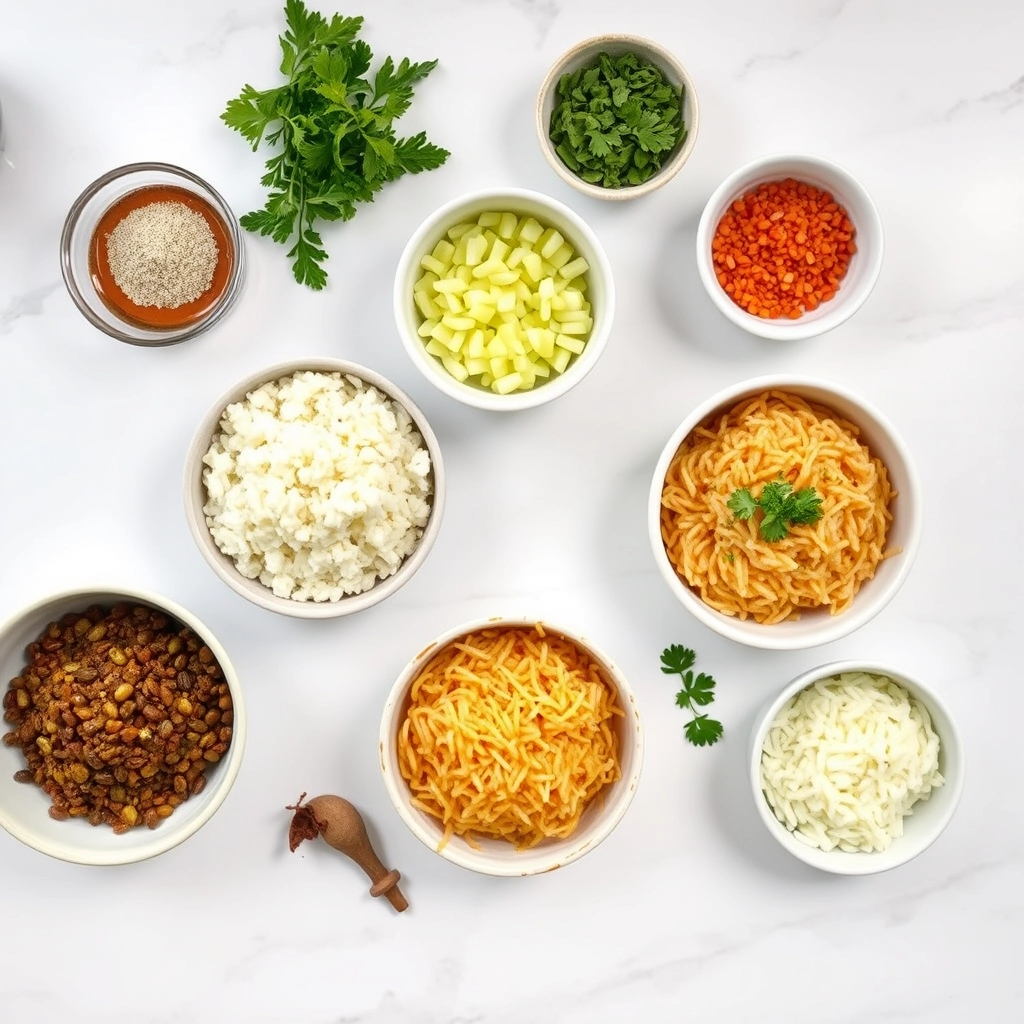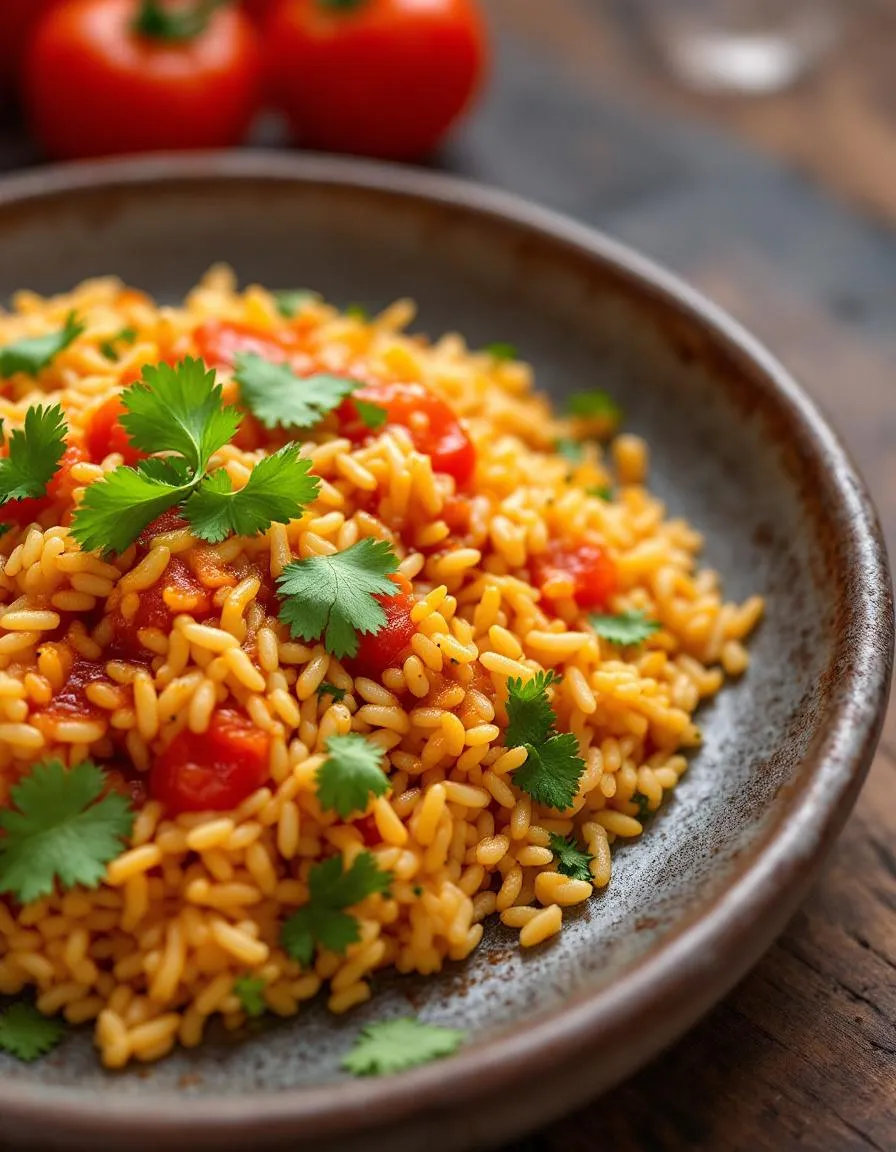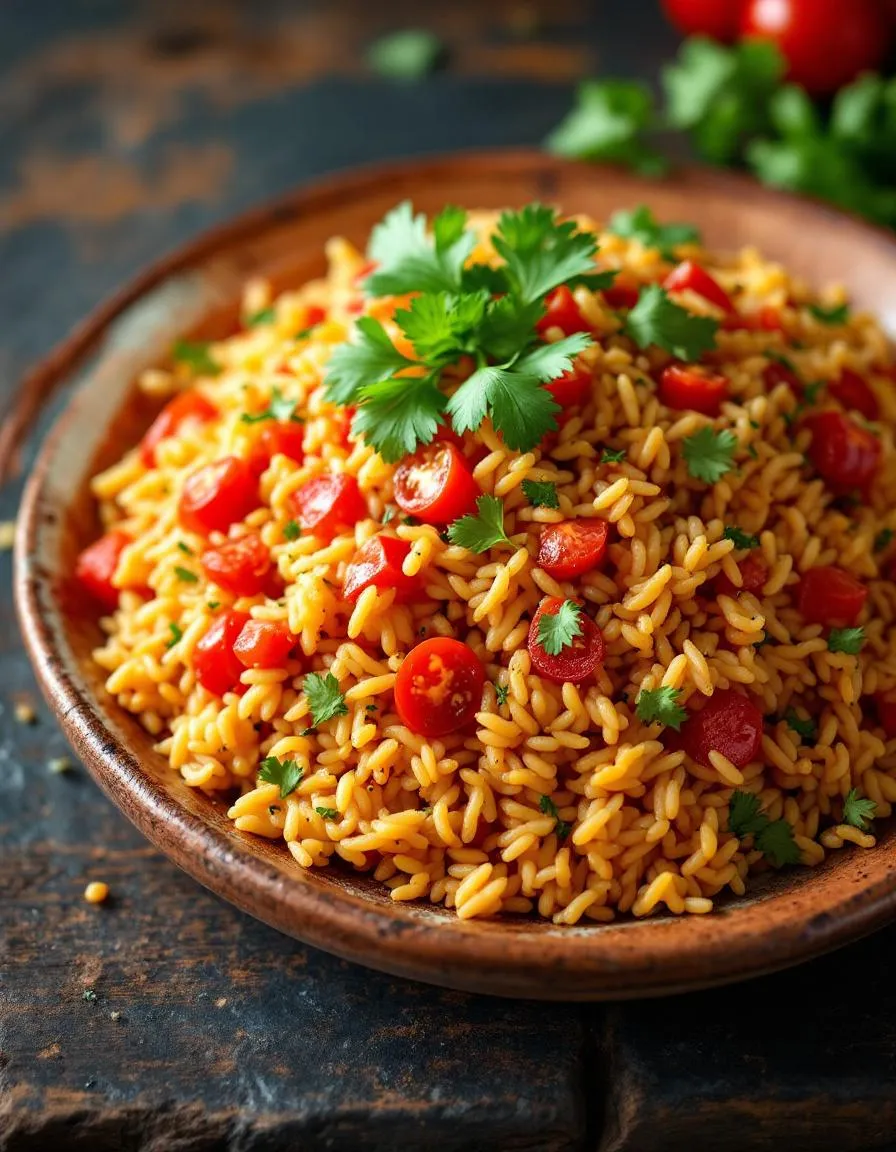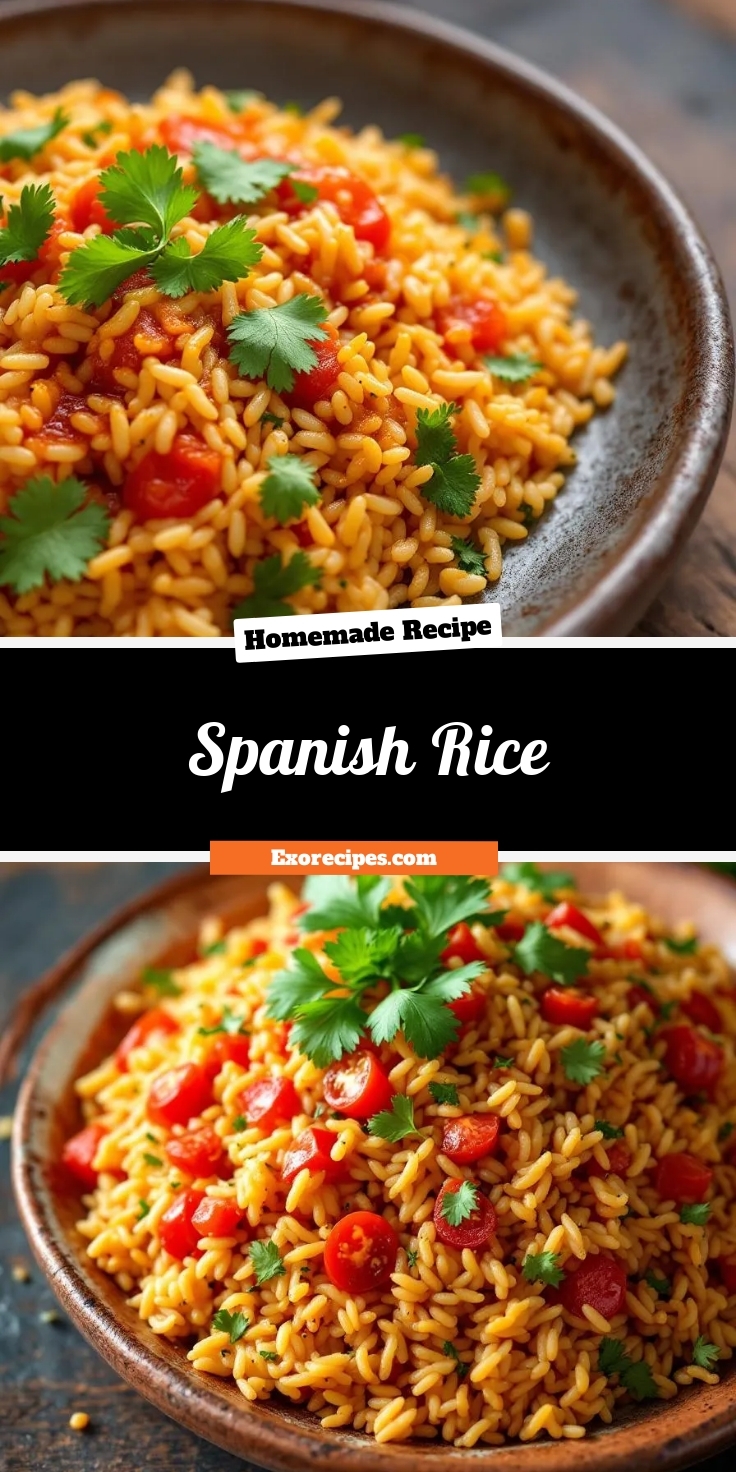Introduction
There’s something deeply comforting about a dish that brings both flavor and nostalgia to the table. That’s exactly why Spanish Rice holds a special place in my kitchen. Whether you grew up with it or are discovering it for the first time, this vibrant, savory dish has a way of wrapping you in warmth. Plus, it’s incredibly versatile—pair it with your favorite protein, serve it as a side, or enjoy it all on its own. No matter how you savor it, Spanish Rice delivers a taste of tradition with every bite.
Spanish Rice, often called Mexican Rice, is a staple in many households for good reason. At its core, it’s a simple yet flavorful blend of rice, tomatoes, onions, and spices, but the result is anything but ordinary. The tomatoes give it that signature reddish hue, while garlic, cumin, and broth infuse it with rich, aromatic depth. Unlike plain white rice, Spanish Rice stands out because it carries bold, savory notes that elevate any meal. For busy home cooks, it’s also a lifesaver—quick to prepare, budget-friendly, and endlessly adaptable. Whether you’re whipping up a weeknight dinner or prepping for a gathering, this dish fits seamlessly into any plan. And here at brekcakes.com, we celebrate recipes that balance ease and flavor, just like our Easy Weeknight Dinners collection. Speaking of crowd-pleasers, if you love dishes that bring people together, you’ll adore our Comfort Food Classics too.
Why I Love This Recipe
Spanish Rice reminds me of family—specifically, the Sunday dinners my abuela used to make. She’d simmer it low and slow, letting the flavors meld until the kitchen smelled like heaven. Every time I make it now, I’m transported back to those moments of laughter and shared stories around the table. It’s more than just a dish to me; it’s a reminder that food connects us, not just to our roots but to the people we love. That’s why I’m so excited to share my version with you—it’s packed with the same heart and soul.
Health and Nutrition
Why it’s good for your body
Spanish Rice packs a nutritious punch while delivering bold flavors. First, it combines fiber-rich ingredients like tomatoes, onions, and bell peppers, which support digestion and keep you feeling full longer. Additionally, the dish often includes olive oil, a heart-healthy fat that may help reduce inflammation. Since Spanish Rice typically features long-grain rice, it provides steady energy without causing sharp blood sugar spikes when enjoyed in moderation.
Moreover, the spices in Spanish Rice, such as cumin and garlic, offer antioxidant benefits. These ingredients may boost immunity and even aid in fighting off common illnesses. Furthermore, the tomatoes contribute lycopene, a compound linked to improved heart health. Whether you use brown or white rice, Spanish Rice remains a versatile way to incorporate veggies and wholesome fats into your meals.
Finally, this dish adapts easily to dietary preferences. For instance, you can swap white rice for quinoa or cauliflower rice to increase protein or reduce carbs. With its balance of nutrients and vibrant taste, Spanish Rice proves that healthy eating doesn’t have to be bland.
How it fits in a healthy lifestyle
Spanish Rice fits seamlessly into a balanced diet, whether you’re aiming for gluten-free meals or simply want a satisfying side dish. Since it’s naturally gluten-free, it’s a great option for those with sensitivities. Pair it with grilled chicken or black beans for a protein boost, making it a complete meal. If you’re watching sodium intake, simply reduce the salt and let the herbs and spices shine.
For meal preppers, Spanish Rice stores well and reheats beautifully, saving time on busy weeknights. Try pairing it with our Easy Vegetable Stir Fry for a veggie-packed dinner. If you’re focused on heart health, use brown rice and extra-virgin olive oil to maximize fiber and healthy fats. Check out our Balanced Diet Tips for more ways to make nutritious choices without sacrificing flavor. With simple tweaks, Spanish Rice can align with almost any health goal while keeping meals exciting.

Spanish Rice
Description
A flavorful and aromatic Spanish-style rice dish cooked with tomatoes, onions, and spices.
Ingredients
Scale
For the Crust:
- 1 cup long-grain white rice
- 2 tablespoons olive oil
- 1 small onion, diced
- 2 cloves garlic, minced
- 1 can (14.5 oz) diced tomatoes
- 2 cups chicken or vegetable broth
- 1 teaspoon paprika
- 1/2 teaspoon cumin
- 1/2 teaspoon salt
- 1/4 teaspoon black pepper
- 1/4 cup chopped fresh cilantro (optional)
Instructions
1. Prepare the Crust:
- Rinse the rice under cold water until the water runs clear. Drain well.
- Heat olive oil in a large skillet over medium heat. Add the onion and cook until softened, about 3 minutes.
- Add the garlic and cook for another 30 seconds until fragrant.
- Stir in the rice and cook for 2 minutes, stirring frequently, until lightly toasted.
- Add the diced tomatoes, broth, paprika, cumin, salt, and black pepper. Stir well.
- Bring the mixture to a boil, then reduce heat to low. Cover and simmer for 20 minutes, or until the rice is tender and the liquid is absorbed.
- Remove from heat and let it sit covered for 5 minutes. Fluff with a fork and garnish with cilantro if desired.
Notes
You can customize the seasonings to taste.

How to Prepare This Dish
Steps and time-saving tips
Start by heating olive oil in a large skillet over medium heat. Toss in diced onions and bell peppers, then sauté until they soften—about 3 minutes. Stir in minced garlic and let it bloom for 30 seconds to deepen the flavor. Next, add long-grain rice and toast it lightly for 2 minutes, stirring constantly to prevent burning. Pour in tomato sauce, chicken broth, and a pinch of saffron or turmeric for that signature Spanish rice color. Bring everything to a gentle boil, then reduce the heat to low and cover the skillet tightly. Let the rice simmer undisturbed for 18-20 minutes. Meanwhile, chop fresh cilantro and slice green onions for garnish. Once the rice absorbs all the liquid, fluff it with a fork and fold in the herbs. For a time-saving hack, use pre-chopped frozen onions and peppers or swap fresh garlic for jarred minced garlic. Serve your Spanish rice warm with a squeeze of lime for brightness.



